Premium Only Content

What storytelling techniques can be used in motion ads
Once Upon a Timeline: Storytelling Secrets from the Motion Ad World"
"So I Walk Into a Bar… and It’s Actually a Banner Ad"
Alright, picture this: I’m scrolling through Instagram, minding my own business, when BAM—an ad punches me in the face with “BUY NOW!” energy like it just discovered Red Bull. No hello. No backstory. Just straight-up capitalism in its underwear.
That’s when I realized: most ads have the charisma of a PowerPoint on NyQuil. But the great ones? They tell a story. They don’t just sell—they seduce. And motion ads? Oh, baby. With a touch of animation, they can turn a boring call-to-action into a Pixar short.
"The Hero’s Journey—Starring Your Shampoo"
Let’s talk about storytelling structure. Ever heard of the Hero’s Journey? It's the classic story arc where the protagonist faces conflict, grows, and triumphs.
Now apply that to a motion ad:
Ordinary World: “Here’s me, sad, with flat hair.”
Call to Adventure: “I find this volumizing shampoo ad while doomscrolling.”
Crossing the Threshold: “I try it. The music swells. My hair defies gravity.”
The Return: “Now I’m the main character at every brunch.”
Seriously, Pantene did this in a 30-second animated ad in Thailand. It followed a deaf girl who wanted to play the violin. I cried. Then I bought conditioner.
Takeaway: Structure sells. Make your product the Gandalf of someone's Frodo moment.
"Conflict Sells—Even if It’s Between a Toaster and a Bagel"
Conflict creates drama. And drama keeps eyes glued to screens longer than caffeine and chaos.
Case study: Remember those Old Spice commercials? The man your man could smell like? Every second was a plot twist wrapped in muscle oil. Suddenly, we all cared deeply about scented body wash.
Or that ad where a pizza delivery guy battles traffic while being animated like a superhero just to deliver on time? That’s storytelling conflict—animated, dramatized, and eaten with extra cheese.
Tip: Turn your product into the underdog. Create an enemy—boredom, clutter, pimples. And then... animate the heck out of that redemption arc.
"Emotional Manipulation… But Make It Cute"
You know what slaps harder than logic? Feelings. Emotions are the cheat codes of marketing. But make them adorable, and you go viral.
Case in point: Extra Gum’s “The Story of Sarah & Juan.” A paper gum wrapper became a plot device in a love story that got millions sobbing in the comments. One YouTube user wrote, “WHY AM I CRYING OVER GUM?!”
If gum can make us cry, your animated product demo can make them feel something.
Pro tip: Use motion graphics to exaggerate emotion—big eyes, slow motion, sad violin background. You want Pixar, not PowerPoint.
"The Twist Ending That Made Me Buy a Fridge"
Let’s talk surprise. People binge Netflix not for predictability but for the twist. Your motion ad needs a third-act “gotcha.”
True story: A motion ad for a fridge started off like a nature documentary—icebergs, polar bears, voiceover. Turns out, the climate crisis was melting everything… until a super-efficient fridge saved the scene. Bam. Unexpected. Memorable. Viral.
Takeaway: Your animation should have a beginning, a middle, and a “wait, WHAT?!” moment that makes people click “share” faster than you can say “algorithm.”
"Relatability Is King—Even if You’re a Talking Vacuum"
Ever seen an animated ad where the main character is a Roomba with existential dread? You’d think it’s satire—until 2 million views later, it’s being praised for “capturing the loneliness of modern life.” 😂
People love stories where they see themselves—even if it’s in a sad, circular robot.
That’s why persona-driven motion ads work so well. They anthropomorphize, dramatize, and empathize. Suddenly, we’re not watching a product—we’re watching ourselves. But in HD.
"Data Nerds Assemble: Viral Case Studies You Can Steal"
Let’s get nerdy. What actually works in motion ads, according to cold, hard data?
Dove's “Reverse Selfie” – Used animated layers to show how social media distorts self-image. Viral. Millions of shares. Heavy message, beautiful animation.
Dollar Shave Club – Deadpan humor + absurd scenarios + simple storytelling = $1 billion acquisition.
Duolingo’s Owl – Aggressive reminders animated into memes. Somehow turned guilt into brand loyalty.
What they all did:
– Start strong
– Tell a story
– End with punchline, payoff, or plot twist
"Your Motion Ad Doesn’t Suck. It Just Needs a Story."
So let’s be honest Most motion ads flop because they think being flashy is enough. But animation without storytelling is just visual noise. Like fireworks with no finale. Like a TED Talk with no microphone.
To make your motion ads stand out, remember this:
Hook fast
Make it human
Build tension
Show transformation
Deliver a twist or payoff
Then wrap it in smooth motion graphics, like bacon around shrimp. Irresistible.
🧰 BONUS: Your “Make Them Laugh Then Buy” Checklist
✔️ Add a character (even if it’s a dancing sock)
✔️ Introduce a problem we all feel
✔️ Dramatize the solution—make it epic
✔️ Throw in a plot twist or absurd payoff
✔️ Use humor, not hard sells
✔️ Leave them smiling—or sobbing (either works)
Want to tell stories that sell with animation?
Start with the heart, animate with brains, and deliver with a funny bone.
Need a 3D ad that actually sells your product? 👉 Click here and let the pixels do the pitching.
https://pixcious.com
Because in the end, every click is a "once upon a time"... waiting to be told.
-
 19:53
19:53
Stephen Gardner
13 hours ago🔥EXPOSED: Charlie Kirk Shooter's Trans Partner Tells FBI EVERYTHING!
67.8K329 -
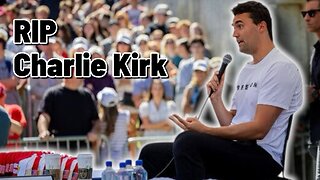 2:47:25
2:47:25
BlackDiamondGunsandGear
9 hours agoAfter Hours Armory / RIP Charlie Kirk / What we know
44K7 -
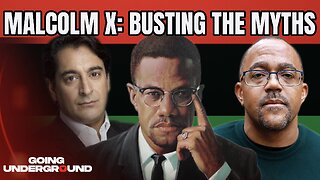 29:09
29:09
Afshin Rattansi's Going Underground
1 day agoThe Political Life of Malcolm X: Busting the Myths (Prof. Kehinde Andrews)
53.4K14 -
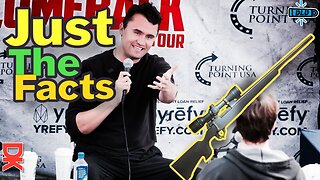 2:47:25
2:47:25
DLDAfterDark
9 hours ago $6.32 earnedThe Assassination of Charlie Kirk - Just What We KNOW
32.8K7 -
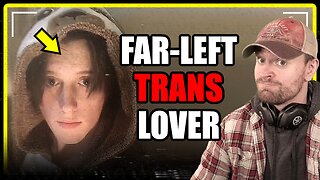 1:33:56
1:33:56
MattMorseTV
10 hours ago $40.89 earned🔴Exposing his PARTNER IN CRIME.🔴
86.8K290 -
 1:26:51
1:26:51
vivafrei
14 hours agoCharlie Kirk Assassination - When Peaceful Discussion Becomes Impossible - With Jose Vege
107K261 -
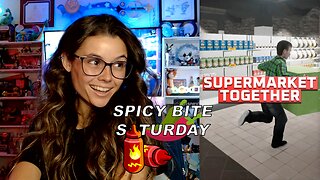 2:04:12
2:04:12
Mally_Mouse
1 day ago🌶️ 🥵Spicy BITE Saturday!! 🥵🌶️- Let's Play: Supermarket Together
53.3K3 -
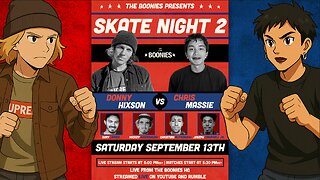 1:15:37
1:15:37
BooniesHQ
14 hours ago $7.51 earnedGame Of SKATE Donny Hixson Vs. Chris Massie: Boonies Skate Night 2
70K7 -
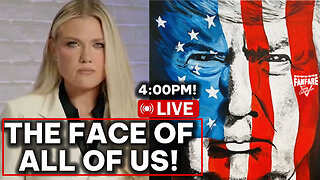 2:56:25
2:56:25
Barry Cunningham
15 hours agoTHE TAKING OF CHARLIE KIRK HAS IGNITED A FLAME! AND A BREAKING (BUT NOT SHOCKING) UPDATE!
120K126 -
 9:38
9:38
Exploring With Nug
19 hours ago $3.82 earnedSearching Florida Waters for a Missing Murder Victim’s Car | Alligator Encounter!
47.2K1